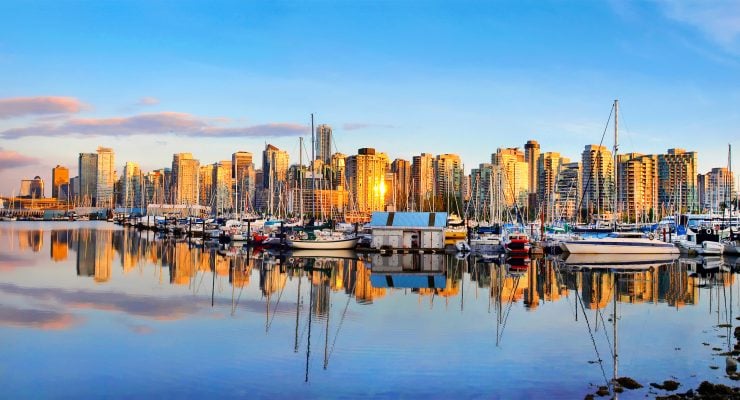Finding long-term accommodation
Looking for a long-term accommodation option is both an exciting and stressful adventure—sure, it’s a new start for you but for now, it feels like you’re going to have to climb mountains.
Don’t stress out too much. Compared to many countries around the world, renting a room or an apartment is fairly straightforward in Canada.
In some cases, you’ll sign a lease directly with a landlord and that’s it—no agency fees, no need to provide ten years’ worth of pay stubs and no need to have a cosigner making over a million dollars per month.
However, sometimes, you will have to be stubborn and patient. There might be an affordable housing shortage, like in Whitehorse, or a more acute rental housing crisis, like in Toronto and Vancouver. When the demand for rental units far outpaces the current supply (e.g. in Toronto, in some cities in Quebec), landlords are more picky and may ask for pay stubs or a full credit history.
Deciphering rental ads
Generally speaking, the size of an apartment in square feet or metres is rarely specified in Canada, but you can ask the landlord.
In Quebec, you’ll see ads for “2 ½,” “3 ½,” “4 ½,” etc. This cryptic description refers to the number of rooms. The “½” is the bathroom, which counts as half a room. The kitchen, the living room and the bedroom each count as one room (and a double living room as two rooms). Note that this unique terminology has nothing to do with the total size of the apartment in square feet or metres. For instance, a “2 ½” (i.e. a bedroom and a living room, plus a kitchenette and a bathroom) may be bigger than a “3 ½” (i.e. same as above, plus a distinct living room, bedroom, and kitchen)! When you see “1 + 1” or “2 + 1,” you have to read the first number as the number of rooms and the “+1” (not always mentioned) as a small office (or “den”) that can double as a guest room.
Terminology is self-explanatory in the rest of Canada, where you’ll see the usual “one-bedroom apartment,” (bedroom + living room) “two-bedroom apartment” (three rooms in total), and so on.
Semi-furnished and fully furnished apartments
A fully furnished apartment comes equipped with furniture, basic kitchen appliances and tableware, bathroom necessities (e.g. a shower curtain), a washer/dryer set, etc.
The expression “semi-furnished” can be used to describe apartments from nearly bare to almost fully furnished. Generally speaking, a semi-furnished apartment has basic big pieces of furniture—sofa, bed, dresser and a table and chairs.
You may also see “washer and dryer connections” (the unit doesn’t come with a washer and dryer but you can hook up your own appliances easily) and/or “on-site laundry facilities” (i.e. a laundry room shared by the whole building)
Utilities included (or “all inclusive”)
Heat (as well as hot water) might be included in the rent. Home energy costs can be high in Canada because of harsh weather conditions in winter (especially if the apartment has poor insulation), so a “utilities included” apartment can be a good deal.
“All inclusive” means that heat, water and hydro are included in the rent. Sometimes, Internet access and cable are also included—this will be mentioned in the ad.
If you have a car, check if a parking spot is included in the rent or if you have to pay extra.
Note that in Canada, “hydro” refers to electricity, so the “hydro bill” is your electricity bill—this is a holdover from when electricity was completely generated by water, and Canada remains a large hydropower producer.
Apartments vs. condos
The market for “condos” (short for “condominiums”) boomed in several cities, including Toronto and Vancouver. In terms of physical attributes, condos look like apartments. However, while apartment complexes are usually owned by a single entity (e.g. a corporation) and then leased out to individual tenants, condo units are owned by individuals and usually then managed by a homeowner association (HOA).
Condo buildings often offer fancy amenities like a fitness room, a swimming pool or 24/7 front desk service. Rent tends to be much higher but you may be able to find a good deal, especially if you share a unit with roommates.
Basement and semi-basement apartments
Basement apartments are a common cheaper rental option in Canada. Don’t picture a dark cave—these basements are “finished,” which means they are painted and come with floor coverings, moulding, doors and windows, heat and light. However, they can be noisier (depending on traffic) and lack of light can be an issue, especially in winter when there’s snow on the windows. Humidity in a basement is also higher than on the upper floors—a dehumidifier can be a good investment.
By the way, remember that Canada generally follows the American convention, where the “first” floor is the floor at the ground level and the floor above it is the “second” floor.
Rental agencies
If you’re feeling overwhelmed, you may want to consider going though a rental agency.
In big cities, real-estate agents can help you with your search when you’re struggling with online ads. An agent can guide your search from the very start, helping you find the right neighbourhood, apartment size, and price range, then go with you to open houses. When you already know what you are looking for, the agent will send you relevant listings with suitable options. Your agent should also help you read and understand your lease.
The service is free to tenants—the landlord pays the agent’s commission.
Rental agents must be licensed, so don’t hesitate to check to make sure you’re working with a professional.
Finding a rental before coming to Canada
It’s always best to sign your lease once you’re in Canada, after visiting the place in person. However, if boarding the plane without knowing where you’ll sleep stresses you out, you can choose to commit to a place before the big trip.
Make sure to follow these tips:
- If you’re not familiar with your destination city and if all neighbourhoods look the same on paper, use Google Maps to explore the area. Take note of businesses, services, etc. and use the “street view” mode to get a better feel of the area.
- Before committing to a long lease, try to find someone local and trustworthy (a friend, an acquaintance or maybe a pvtistes.net member) to check out the place for you.
- Never send money through Western Union—most of the time, it’s a scam. Unlike with bank transfers or PayPal payments, the recipient can’t be traced. Once the money is sent, there’s almost no record of who is claiming the funds. At this stage, you shouldn’t send money to cover “fees” or a “security deposit.” It’s best to find a landlord who agrees to save the place for you until you arrive and sign the lease in person.
- Trust your gut. If you notice there’s something off about the landlord or the tenant, if the deal is too good to be true, if you have a bad feeling about something, just listen to your instinct. This is especially true when it comes to potential roommates—do you really want to live with people who make you feel uneasy?
- Don’t rush! Even if you find the dream place, don’t forget the above tips. And don’t start looking for a place months before your departure unless you know the tenant will leave right when you’ll be ready to move in.
- here are generally fewer ads for apartments available in the next three or four months than for apartments available right away, which is pretty logical. So don’t freak out if in February, when you start checking out the market, there are no rentals available in June—the keywords are “not yet”!
Finding a rental after arriving in Canada
It’s often easier to find your dream place once you arrive in Canada. The city will feel more familiar and you’ll be able to visit several options.
The top two classifieds websites are Craigslist and Kijiji. . Tired of squinting at your computer screen? Go for a walk and try to spot “for rent” signs in your favourite neighbourhoods! Don’t forget to check classifieds in local newspapers and let everyone around you know that you’re in the market for a rental to kick off a word-of-mouth apartment search on the side—you’ll be surprised to see how efficient it can be.
While other provinces celebrate Canada Day on July 1, many tenants in Quebec are busy… moving! Traditionally, most housing leases end on June 30. Don’t worry, you can sign a lease anytime in the calendar year and roommates are needed year-round.
During your visits, ask what’s included in the rent (i.e. heat, hydro, furniture, Internet access, etc.). Make sure everything works and pay attention to the condition of the unit. Are repairs needed? How is the plumbing? Does the building look safe? Do the windows close well? How is the insulation? Your environment should be safe and liveable. If something is broken, bring it to the landlord’s attention during the move-in inspection.
Ever heard of bed bugs? These small, brownish insects about the size of an apple seed come out at night to bite and feed on human blood. Infestations are a real issue in North America. “Good night, sleep tight, don’t let the bed bugs bite”… and mostly, consult the Bed Bug Registry.
Finally, it’s strongly advised to sign a standardized lease agreement, and it’s mandatory in several provinces, including Ontario. This legal document outlines the basic terms of a lease between a landlord and a tenant, including your rights and responsibilities. Lease templates can be downloaded or bought in many convenient places, including bookstores and drugstores.
Renting alone, living with roommates and subletting
To move in quickly without the hassle of buying furniture, renting a room in a shared house or subletting a unit are the best solutions.
Many WHP holders choose to share a house with roommates—this flexible rental solution is a good way to meet people, learn more about Canadian culture, and get tips from knowledgeable locals who have been there longer than you.
Sublet apartments are often furnished and ready to live in, so it’s a great deal if you don’t want to spend your first few days in Canada at IKEA. Note that it’s important to sign an agreement with the original tenant (it should include all of the obligations from the original lease).
Many couples choose to rent their own unit but some share a house with roommates as well.
Tenant’s insurance
In Canada, the law does not require tenant’s insurance and your landlord cannot force you to get it. However, it’s advisable to purchase coverage. Typically, tenant’s insurance can help you replace your belongings after a loss due to theft, fire, or water damage and protects you if someone gets hurt or if someone else’s property is damaged because of your negligence. Shop around, but coverage should be around $20-$30 per month.
















 Français
Français English
English




0 comments
{{like.username}}
Loading...
Load more